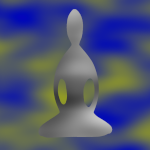Dear Friends,
The next series of talks will look at the faculty of sati, the Pali term that is commonly translated as mindfulness; Gil also uses the term awareness. As with the other faculties, Gil Fronsdal will focus in on different aspects of mindfulness that we can develop.
The first aspect Gil reviews is what he calls “simple mindfulness.” He says, “in and of itself, sati is the basic human capacity for attention, for awareness.”
https://www.audiodharma.org/talks/11110
As a faculty, mindfulness or awareness is something we all have. Mindfulness practice takes that faculty that we have in combination with other supportive factors such that the faculty of mindfulness can grow or develop.
When we sit to practice, we have a bit of faith, confidence, or trust that this practice is worthwhile. If you need a little borrowed faith, here’s what Gil says:
But as mindfulness keeps growing and developing, it becomes quite special, quite wonderful. I just delight in having spent my adult lifetime exploring, developing, playing, and struggling with awareness and mindfulness — exploring the ins and outs, and all that is revealed and clarified — all of the challenges it exposes, the parts of myself that need more work or attention — or places I get caught, or places I can become free. I can’t imagine ever coming to a time when I no longer want to be mindful. It’s one of the best things going. I trust mindfulness so much. Life seems to go so much better with mindfulness.
There is some initiating effort to arrive in the present moment. One of the supports for this initiating effort is to have some intentionality. Doing some sort of arriving practice is useful, to let the body, heart, and mind know that we’re going to do something special. Some rituals could be to chant or say a little phrase, to light a candle or incense, to bow or stretch, to walk or do some movement practices, to have a cup of tea, etc. For me, being deliberate about establishing my meditation posture helps. Whatever you do, it doesn’t have to be elaborate. It can serve as a helpful way to separate this period of practice from the rest of the day.
There is also some effort to invite some ease or relaxation. I sit at the computer a lot, so there is often a lot of tension in my neck and shoulders. When I meditate, I often will invite this to release with a soft phrase like, “may the body and mind relax.”
And Gil reminds us, “the next thing about initiating mindfulness and establishing mindfulness here is to remember that mindfulness is very, very simple. If it’s not simple, it probably isn’t mindfulness. It’s a simple recognition and awareness of the present moment. Just this. Just this.”
He continues, “Sometimes I use the word here for this initiating mindfulness. I just say here in a very kind way. Here. It is a way of opening my attention to recognize what is here, without any preference for one thing over another. Just whatever is happening here. If it’s a busy mind, then I recognize a busy mind. If there are a lot of sounds, then there are a lot of sounds. If there are a lot of body sensations, then here are sensations. If I’m tired, then here is tiredness. Nothing more complicated than that. I’ll just do this in a nice rhythm. Here. Just this.”
Meditation:
For whatever meditation you do today, see if you can start with some intentionality or ritual. If it’s helpful, I have a 6-minute guided meditation on taking establishing a seated posture here:
https://soundcloud.com/saskatooninsight/establishing-a-seated-posture/s-6ozf5aJweIS
For a longer meditation, I love this simplicity in this meditation from Adrianne Ross, from a retreat she led in Saskatoon in 2017 on the topic of the five faculties. (44 minutes):
https://soundcloud.com/saskatooninsight/friday-morning-guided
With good wishes,
Andrea
